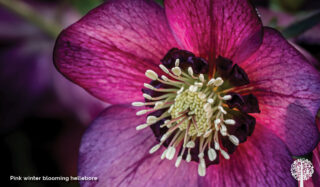On December 30th, 2023, it was a balmy 13.2°C in Vancouver, and the garden stubbornly refused a winter nap. While flowering plants in typically cold months may seem uplifting, it creates some garden chaos, and it’s a sign that gardeners need to start adapting to unusual temperature swings.
Changing Climate, Changing Gardens
El Niño is the naturally occurring warming of the ocean in the central and eastern portions of the Pacific that occurs every two to seven years. This affects weather patterns globally, and in southern BC, it generally means a mild and wet winter. Combining the phenomenon with a warming planet can cause some challenges for our plants.
In mid-November, my clematis set new buds and opened. In December, flower stalks appeared on the rudbeckia, which usually blooms in the summer’s heat. The perennial fuchsia kept flowering, and roses bloomed at Christmas! The aphids kept reproducing because the cold never killed them, and they infested my hellebores.

Chill Hours
Many plants growing in cooler climates require several chill hours between 0-7°C. As the temperature drops, the plant receives a signal to go to sleep. When the air and soil warm up in the spring, the plants start growing and reproducing again. We need sleep to feel energized during the day – so do plants!
For example, spring bulbs like tulips and daffodils require 12-16 weeks of chill, giving them time to store soil nutrients and energy to bloom. This is why you plant them in the fall.
What To Do?
You can’t force garden plants into dormancy. Reducing the amount of light a plant receives works for overwintering annuals in the garage but not an entire garden. Plants start to grow in spring, not only because the soil is warming but because the longer daylight hours trigger them. And while less water can convince them to sleep, I have no control over the rain.
So, I adapted and tried to make the best of an unusual situation. I pruned the clematis, which I wouldn’t typically do until early spring. I also hoped it might reset the plant’s clock. I left the roses alone because pruning would cause accelerated growth, and a cold snap, which would inevitably come, would cause frostbite that might kill them. Each plant is different, so each approach had to vary.

I dug down into the soil to see if the daffodils had rooted. Many hadn’t, but I removed the mulch blanket on the soil to cool the bulbs. I left the soil covered around other plants and shrubs to provide nourishment and protection in case the cold came.
I also decided to keep the hellebore out in the rain since water is the best way to eliminate aphids.
Takeaways
My region finally experienced a cold snap in January, but it only lasted two weeks, and temperatures rebounded. Did my efforts work? Time will tell, but the daffodil bulbs are blooming right on cue, and the roses were spared any frostbite. What about next time? I’ll use what worked and expand upon it.
We’ve always known to prepare our gardens for the cold, drought, and heatwaves. But as weather patterns change, gardeners must be prepared for temperature swings at unusual times of the year and adapt to how our gardens will behave. Be mindful and inspect the garden daily, even when it’s supposed to be sleeping. Who said gardening was easy?